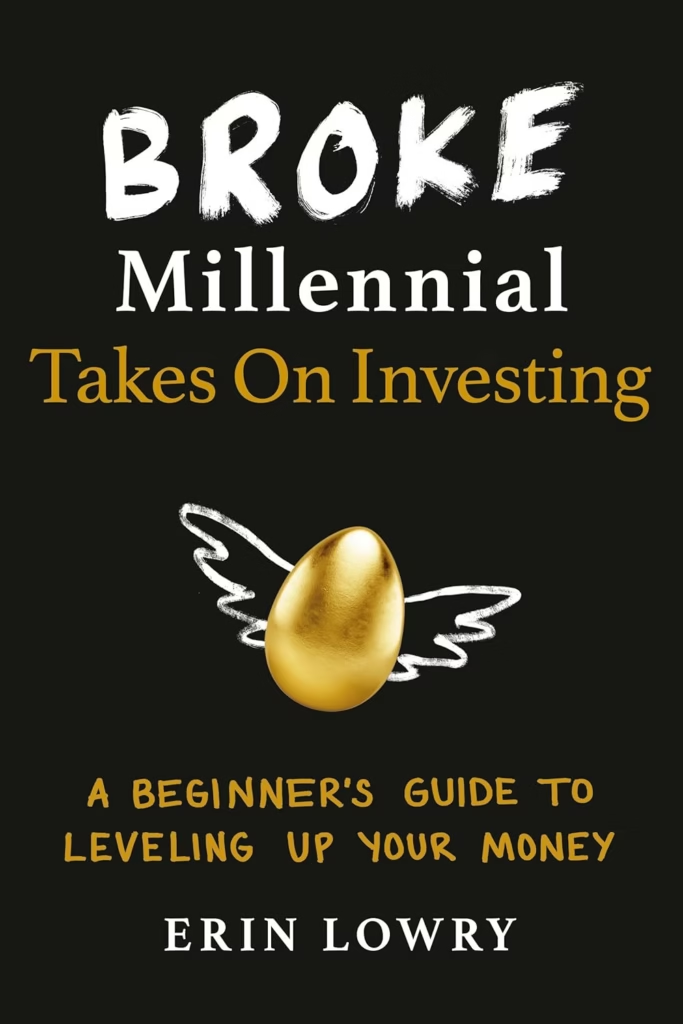Your cart is currently empty!
17 Empowering Lessons from Broke Millennial to Take Control of Your Financial Life

Introduction – Broke Millennial
Broke Millennial: Stop Scraping By and Get Your Financial Life Together by Erin Lowry is a modern, witty, and highly relatable personal finance guide targeted at millennials who want to master their money. In a world full of financial confusion and student debt, Lowry acts as a friendly mentor, delivering practical steps to take control of your finances—without the jargon or shame.
This blog post dives deep into the key insights, chapter summaries, and practical takeaways from the book, offering more than 2500 words of actionable advice. Whether you’re new to budgeting, trying to kill debt, or want to start investing, Broke Millennial has something for you.
Table of Contents

Author’s Approach: Real Talk, No Shame
Erin Lowry’s voice is casual and conversational, which makes dense financial topics digestible. She knows the struggles of the millennial generation—student loans, underemployment, living with parents, and delayed milestones like home ownership. Her goal: help readers navigate the emotional and practical challenges of money management.
Chapter-by-Chapter Insights
Chapter 1: Money Isn’t the Worst!
Lowry kicks off by confronting the financial baggage many millennials carry. She suggests reflecting on your money story—how you were raised around money and how it affects your current financial habits.
Key Insight: Understanding your money mindset is the first step to changing it.
Chapter 2: Is Money a Tinder Date or Marriage Material?
This chapter asks readers to define their relationship with money. Are you casually checking in, or committed to long-term financial planning?
Takeaway: Treat money like a life partner—be intentional, attentive, and strategic.
Chapter 3: Do You Have a Gold Star in Personal Finance?
Lowry introduces a basic financial audit. She walks readers through:
- Net worth calculation
- Tracking expenses
- Understanding where your money goes
Practical Tip: Use budgeting apps or spreadsheets to track spending. Knowledge is power.
Chapter 4: Dealing with the Debt You Didn’t Regret
Student loans are a reality for many. Erin explains the types of student loans, interest rates, repayment plans, and forgiveness programs in simple language.
Actionable Advice: Understand your loan details and explore repayment options like income-driven repayment (IDR).
Chapter 5: Dealing with the Debt You Regret
This chapter tackles credit card debt and other high-interest loans.
Tools Shared:
- Debt snowball vs. debt avalanche methods
- Negotiating lower interest rates
- Balance transfer options
Quote: “It’s time to break up with your credit card debt.”
Chapter 6: The Art of Budgeting (Yes, You Need a Budget)
Lowry makes budgeting approachable, not restrictive. She presents several methods:
- Zero-based budgeting
- 50/20/30 rule
- Pay-yourself-first method
Pro Tip: Automate savings to make budgeting easier.
Chapter 7: Picking the Right Financial Products
Navigating banks, credit cards, and accounts can be tricky. Erin helps you understand:
- What to look for in a checking/savings account
- How to choose a credit card
- Fees to avoid
Takeaway: Don’t be loyal to a bank—be loyal to your money.
Chapter 8: Understanding Credit Scores and Reports
Credit scores play a critical role in renting apartments, getting loans, and even job applications. Lowry breaks down:
- How credit scores are calculated
- How to access your credit report for free
- Ways to build or repair credit
Quote: “Your credit score is a snapshot, not a life sentence.”
Chapter 9: Rent, Roommates, and Real Estate
From splitting bills with roommates to dealing with landlords, this chapter is practical for millennials navigating housing.
Key Advice:
- Have a roommate agreement
- Know your tenant rights
- Avoid lifestyle inflation
Chapter 10: How to Afford the Big Stuff
Cars, weddings, vacations—Lowry helps you plan for big expenses without going broke.
Strategy: Sinking funds—saving small amounts regularly for large purchases.
Chapter 11: Investing: No, It’s Not Just for Rich People
Erin demystifies investing for the average millennial. Topics covered:
- Why you need to start investing ASAP
- Understanding compound interest
- Roth IRA vs. Traditional IRA
- Index funds and robo-advisors
Motivational Nugget: Investing is essential, even if you’re broke now.
Chapter 12: Retirement: You’re Never Too Young
Lowry urges young people to start retirement planning early. She explains:
- 401(k)s and employer matching
- Contribution limits
- Time value of money
Takeaway: Start small. The earlier, the better.
Chapter 13: Insurance: You’re Not Invincible
Millennials often overlook insurance. Erin covers:
- Health, renters, auto, and life insurance
- How to evaluate policies
Advice: Avoid being underinsured. Emergencies can be expensive.
Chapter 14: Love and Money
Money in relationships can be tricky. Lowry discusses:
- Talking finances with your partner
- Merging or separating accounts
- Financial red flags
Quote: “Financial intimacy is just as important as emotional intimacy.”
Chapter 15: Friends, Freeloaders, and FOMO
This chapter focuses on peer pressure and social spending:
- Saying no gracefully
- Setting financial boundaries
- Avoiding comparison traps
Strategy: Have a script ready for declining expensive plans.
Chapter 16: Giving Back
Lowry encourages philanthropy, even for those with limited means:
- Volunteering time
- Donating money strategically
Message: Generosity isn’t just for the wealthy—it’s a mindset.
Chapter 17: How to Get Financially Naked
A fun yet serious chapter on full financial disclosure with partners or roommates. Erin recommends:
- Full money transparency before moving in together
- Discussing goals, debt, credit, and expectations
Pro Tip: Schedule regular money check-ins with your partner.
Overall Themes and Lessons
1. Financial Literacy is a Journey
Lowry doesn’t expect perfection. She emphasizes consistent learning and progress over time.
2. Emotion Plays a Role
She explores the emotional weight of money—shame, anxiety, insecurity—and teaches readers how to face it.
3. Everyone Starts Somewhere
No matter how “broke” you feel, there’s always a way to move forward. Her tone is empowering and never judgmental.
4. Tailored Advice
Lowry acknowledges not all advice applies to everyone. She offers flexible approaches based on different lifestyles and income levels.
Who Should Read This Book?
- Millennials just starting out
- Anyone feeling financially lost or overwhelmed
- Young professionals looking to build a financial foundation
- People who prefer humor and real talk over dry financial lingo
Conclusion: Take Charge of Your Money and Future
Broke Millennial is a modern-day personal finance manual for an entire generation. Erin Lowry delivers wisdom with wit and gives readers not just tools, but confidence. Her book proves that financial adulting doesn’t have to be scary or boring.
With relatable stories, simple strategies, and a compassionate tone, she makes personal finance accessible to anyone willing to take the first step.
Start where you are. Use what you have. Do what you can. And remember—Take is Yours.
Buy full copy using below link

- Unleashing the Future: Top 10 Healthcare AI Tools Revolutionizing Patient Care in 2025
- Ultimate Guide to Sustainable Travel Tips and Eco Friendly Travel 2025: Embrace Conscious Travel Trends & Green Travel Destinations
- Ultimate AI Revolution Uncovered: How Artificial Intelligence is Impacting Daily Life Globally in 2025
- Ultimate Digital Nomad Destinations 2025: Discover Where the World’s Best Remote Workers Are Heading Next
- The Future of Remote Work 2025 Trends Shaping How We Work

Leave a Reply
You must be logged in to post a comment.